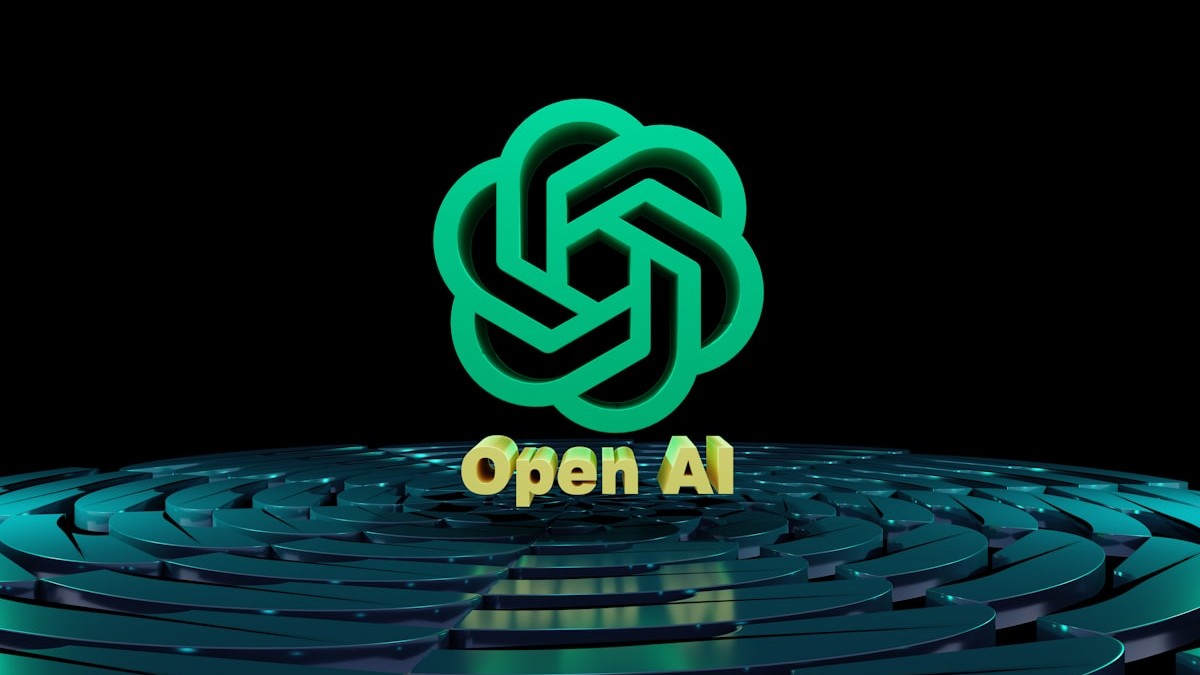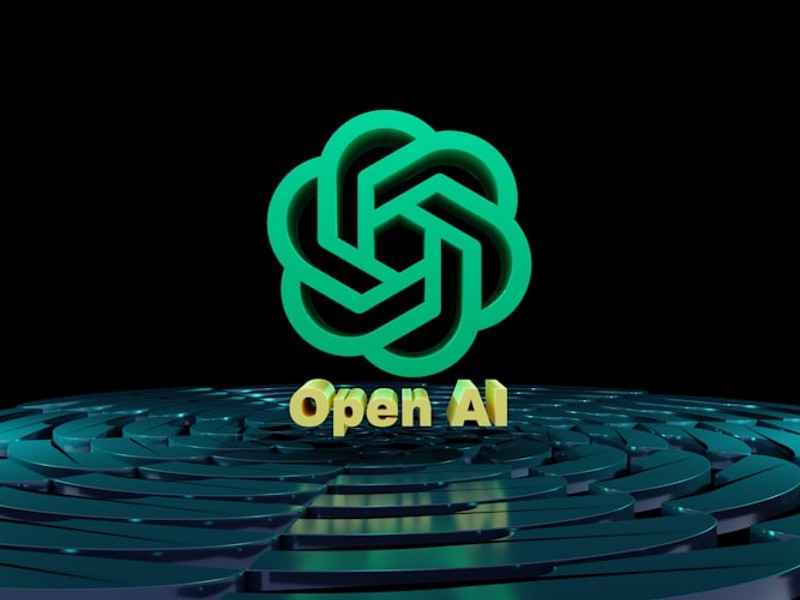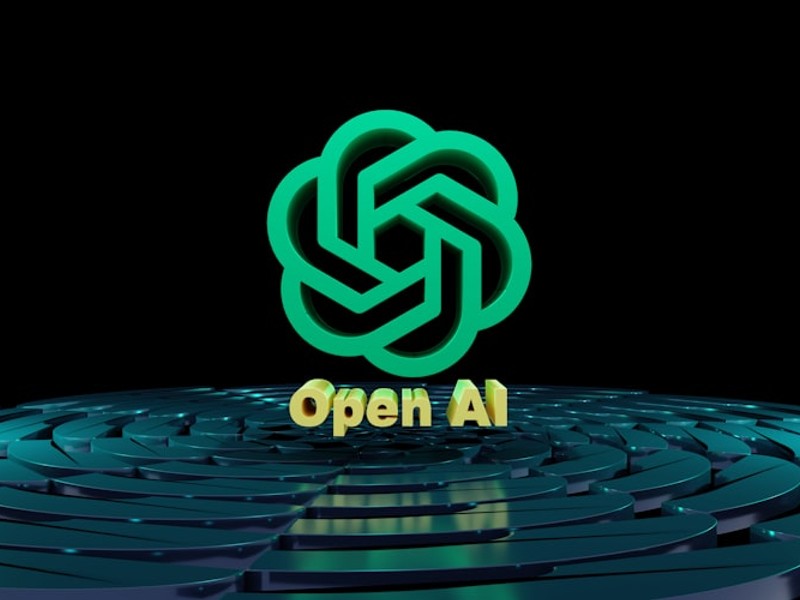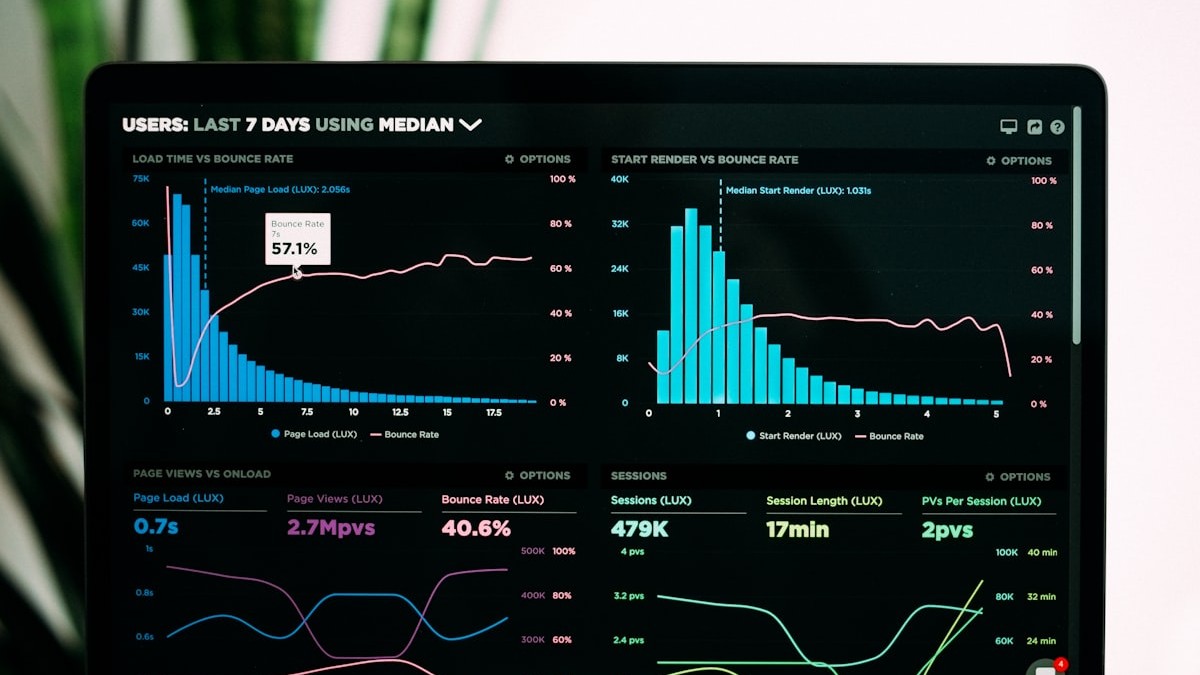Open Access LLMs: Powering Innovation with Open Source AI
Large Language Models (LLMs) are rapidly transforming industries, from content creation and customer service to research and development. While proprietary LLMs from tech giants dominate headlines, a growing movement is championing open access / open-source LLMs. These models offer unprecedented opportunities for customization, transparency, and collaborative innovation. This article dives into the world of open access / open-source LLMs, exploring their benefits, practical applications, current trends, and the challenges they face in competing with closed-source alternatives. We'll examine how these models are democratizing AI and empowering a new generation of developers and researchers.
1. What are Open Access / Open-Source LLMs?

a circular maze with the words open ai on it
In simple terms, open access / open-source LLMs are Large Language Models whose code, data, and often model weights are publicly available. This contrasts with closed-source models where the inner workings are proprietary and inaccessible. The terms "open access" and "open-source" are often used interchangeably in the context of LLMs, but there can be subtle differences:
- Open-Source: Typically refers to models released under a license that grants users the freedom to use, study, modify, and distribute the software (including the model code and weights). Examples include the Apache 2.0 license and the MIT license. This often allows for commercial use, with varying degrees of restriction depending on the license.
- Open Access: This term is broader and can refer to models where access is freely available, even if the source code isn't fully open. It might involve restrictions on commercial use or require attribution. Some models might offer API access without releasing the underlying code.
Ultimately, both concepts emphasize accessibility and the ability for the community to contribute and build upon existing work. The core principle is that knowledge and technology should be shared to accelerate progress.
1.1 Key Characteristics of Open LLMs
- Transparency: Users can inspect the model's architecture, training data (if available), and code. This allows for better understanding and debugging.
- Customization: Developers can fine-tune the model for specific tasks or domains using their own data.
- Collaboration: The open-source nature fosters community contributions, leading to faster improvements and bug fixes.
- Auditability: Open models can be audited for bias and fairness, helping to mitigate potential ethical concerns.
- Cost-Effectiveness: Open LLMs often have lower licensing costs or are entirely free to use, making them accessible to individuals and smaller organizations.
2. Benefits of Using Open Access / Open-Source LLMs

a circular maze with the words open ai on it
The appeal of open access / open-source LLMs stems from a multitude of advantages they offer over their proprietary counterparts. These benefits span technical, economic, and ethical considerations.
- Enhanced Customization and Control: Businesses can tailor these models to their specific needs, fine-tuning them on proprietary data to achieve superior performance in niche applications. For example, a legal firm could fine-tune an open LLM on legal documents to improve its ability to draft contracts or analyze case law.
- Reduced Dependency on Vendors: Organizations avoid vendor lock-in and gain greater control over their AI infrastructure. This reduces reliance on specific companies and mitigates risks associated with price increases or service disruptions.
- Increased Transparency and Trust: The ability to inspect the model's inner workings fosters trust and allows for identification and mitigation of biases or vulnerabilities. This is particularly important in sensitive applications like healthcare or finance.
- Community Support and Collaboration: Open-source communities provide a wealth of resources, including documentation, tutorials, and forums for troubleshooting. This collaborative environment accelerates development and innovation.
- Cost Savings: Open LLMs eliminate or significantly reduce licensing fees, making them a more affordable option for many organizations, especially startups and research institutions. The cost savings can be substantial, allowing resources to be directed towards other areas of development.
3. Practical Applications of Open LLMs

a circular maze with the words open ai on it
The versatility of open access / open-source LLMs makes them applicable across a wide range of industries and use cases. Here are a few examples:
- Content Creation: Generating articles, blog posts, marketing copy, and other written content. Fine-tuning on specific writing styles or topics can produce highly tailored outputs. For example, an e-commerce company could use an open LLM to generate product descriptions that are optimized for SEO.
- Chatbots and Virtual Assistants: Building conversational AI agents for customer service, technical support, or personal assistance. Open LLMs can be customized to handle specific customer inquiries or provide personalized recommendations. For example, a healthcare provider could use an open LLM to build a chatbot that answers common patient questions.
- Code Generation: Assisting developers with writing code in various programming languages. Open LLMs can be trained on code repositories to generate code snippets, complete functions, or even entire programs. Tools like GitHub Copilot leverage similar technology, and open LLMs offer an alternative for those seeking more control and customization.
- Data Analysis and Summarization: Extracting insights from large datasets and generating concise summaries. Open LLMs can be used to analyze customer feedback, identify trends in market data, or summarize research papers. For example, a market research firm could use an open LLM to analyze social media data and identify emerging trends.
- Research and Development: Providing a platform for researchers to experiment with new AI techniques and explore the potential of LLMs. Open LLMs facilitate collaboration and accelerate the pace of scientific discovery. Academic researchers often prefer open-source models for reproducibility and transparency.
4. Popular Open Access / Open-Source LLMs
The landscape of open access / open-source LLMs is constantly evolving, with new models being released regularly. Some of the most popular and influential models include:
- Llama 2 (Meta): A powerful and versatile LLM that has gained widespread adoption due to its strong performance and permissive licensing terms. Llama 2 is available in various sizes, making it suitable for a range of applications. It's considered a strong competitor to closed-source models.
- BLOOM (BigScience): A multilingual LLM trained by a large international collaboration. BLOOM supports over 46 languages and 13 programming languages, making it a valuable resource for global applications.
- Falcon (Technology Innovation Institute): A high-performing LLM known for its efficiency and relatively small size. Falcon has achieved impressive results on various benchmarks and is a good option for resource-constrained environments.
- MPT (MosaicML): A series of transformer models designed for commercial use. MPT models are known for their stability and ease of fine-tuning. MosaicML was acquired by Databricks, further solidifying the model's position in the market.
- Pythia (EleutherAI): A suite of models designed for research purposes. Pythia models are carefully documented and analyzed, making them valuable for understanding the inner workings of LLMs.
It's important to stay updated on the latest releases and benchmarks to choose the most suitable model for your specific needs. Resources like Hugging Face's model hub are invaluable for discovering and evaluating open LLMs.
5. Current Trends in Open LLM Development
The field of open access / open-source LLMs is characterized by rapid innovation and evolving trends. Here are some key developments shaping the landscape:
- Increasing Model Size and Performance: Open LLMs are becoming increasingly powerful, rivaling the performance of closed-source models. This is driven by advancements in training techniques, hardware, and data availability.
- Focus on Efficiency and Accessibility: There's a growing emphasis on developing smaller, more efficient models that can be deployed on resource-constrained devices. This makes LLMs more accessible to a wider range of users.
- Emphasis on Fine-Tuning and Customization: Developers are focusing on creating tools and techniques that make it easier to fine-tune open LLMs for specific tasks and domains. This allows users to tailor models to their unique needs.
- Growing Community Support and Collaboration: The open-source community is playing an increasingly important role in the development and improvement of LLMs. Collaborative projects are accelerating innovation and fostering a more inclusive ecosystem.
- Addressing Bias and Ethical Concerns: Researchers are actively working on methods to detect and mitigate biases in LLMs, ensuring that these models are used responsibly and ethically.
6. Challenges and Limitations
Despite their numerous benefits, open access / open-source LLMs also face certain challenges and limitations:
- Computational Resources: Training large LLMs requires significant computational resources, which can be a barrier to entry for smaller organizations and individuals. While pre-trained models are available, fine-tuning can still be computationally intensive.
- Data Requirements: Training and fine-tuning LLMs requires vast amounts of high-quality data. Acquiring and preparing this data can be a time-consuming and expensive process. Data privacy and security are also important considerations.
- Bias and Fairness: LLMs can inherit biases from their training data, leading to unfair or discriminatory outputs. Addressing bias requires careful data curation and model evaluation.
- Security Vulnerabilities: Open LLMs can be vulnerable to adversarial attacks, where malicious actors attempt to manipulate the model's behavior. Security measures are needed to protect against these attacks.
- Maintenance and Support: Maintaining and supporting open LLMs requires ongoing effort, including bug fixes, security updates, and documentation. This can be a challenge for smaller organizations.
7. The Future of Open Access / Open-Source LLMs
The future of open access / open-source LLMs looks bright. As technology advances and the community grows, these models are poised to become even more powerful, accessible, and reliable. Several key trends will shape the future:
- Democratization of AI: Open LLMs will continue to democratize AI by making it more accessible to individuals and organizations of all sizes. This will empower a new generation of developers and researchers to build innovative AI applications.
- Increased Collaboration and Innovation: The open-source community will play an even greater role in driving innovation in LLM technology. Collaborative projects will accelerate the development of new models and techniques.
- Specialization and Customization: Open LLMs will become increasingly specialized and customizable, allowing users to tailor them to their specific needs. This will lead to more effective and efficient AI applications.
- Focus on Ethical Considerations: Addressing bias, fairness, and security will become increasingly important. Researchers and developers will work together to ensure that LLMs are used responsibly and ethically.
- Integration with Other Technologies: Open LLMs will be increasingly integrated with other technologies, such as cloud computing, edge computing, and robotics. This will enable new and exciting AI applications.
8. Getting Started with Open Access / Open-Source LLMs
Ready to explore the world of open access / open-source LLMs? Here are some steps to get you started:
- Identify Your Use Case: Determine the specific problem you want to solve or the task you want to automate. This will help you choose the right model and fine-tuning strategy.
- Explore Available Models: Research different open LLMs and evaluate their performance, licensing terms, and community support. Hugging Face's model hub is a great resource.
- Choose a Framework: Select a framework for working with LLMs, such as TensorFlow, PyTorch, or Hugging Face Transformers.
- Access Training Data: Gather or create a dataset that is relevant to your use case. Ensure that the data is clean, accurate, and representative.
- Fine-Tune the Model: Fine-tune the pre-trained LLM on your dataset using the chosen framework. Experiment with different hyperparameters to optimize performance.
- Evaluate Performance: Evaluate the performance of the fine-tuned model on a held-out test set. Use appropriate metrics to measure accuracy, precision, recall, and other relevant factors.
- Deploy and Monitor: Deploy the model to a production environment and monitor its performance over time. Continuously improve the model by retraining it with new data.
By embracing open access / open-source LLMs, you can unlock the potential of AI while maintaining control, transparency, and cost-effectiveness. The future of AI is open, and the possibilities are limitless.
Conclusion
Open access / open-source LLMs are revolutionizing the AI landscape, offering a powerful alternative to proprietary models. Their transparency, customizability, and collaborative nature are driving innovation and democratizing access to advanced AI technology. While challenges remain, the benefits of open LLMs are undeniable, and their future is bright. Embrace the open AI movement and explore the potential of these powerful tools to transform your business, research, or creative endeavors. Start experimenting today and contribute to the ever-growing community of open AI enthusiasts.
FAQ
Q1: What is the difference between open access and open-source LLMs?
While often used interchangeably, open-source typically refers to models with code and weights freely available under licenses like Apache 2.0 or MIT, allowing modification and distribution. Open access is broader, implying free access even with usage restrictions (e.g., non-commercial).
Q2: Are open-source LLMs as good as proprietary LLMs?
Performance varies. Some open-source LLMs like Llama 2 rival or even surpass certain proprietary models in specific tasks. The key is choosing the right model and fine-tuning it appropriately for your use case.
Q3: What are the licensing implications of using open-source LLMs?
Licensing terms vary. Some licenses (e.g., Apache 2.0, MIT) are permissive, allowing commercial use with minimal restrictions. Others may have more stringent requirements, such as attribution or share-alike clauses. Always carefully review the license before using an open-source LLM.
Q4: What kind of hardware do I need to run an open-source LLM?
The hardware requirements depend on the model size and complexity. Smaller models can run on consumer-grade GPUs or even CPUs. Larger models may require more powerful GPUs or cloud-based infrastructure.
Q5: Where can I find pre-trained open-source LLMs?
Hugging Face's Model Hub is a central repository for open-source LLMs. Other sources include GitHub, academic research papers, and the websites of organizations that develop open LLMs.


